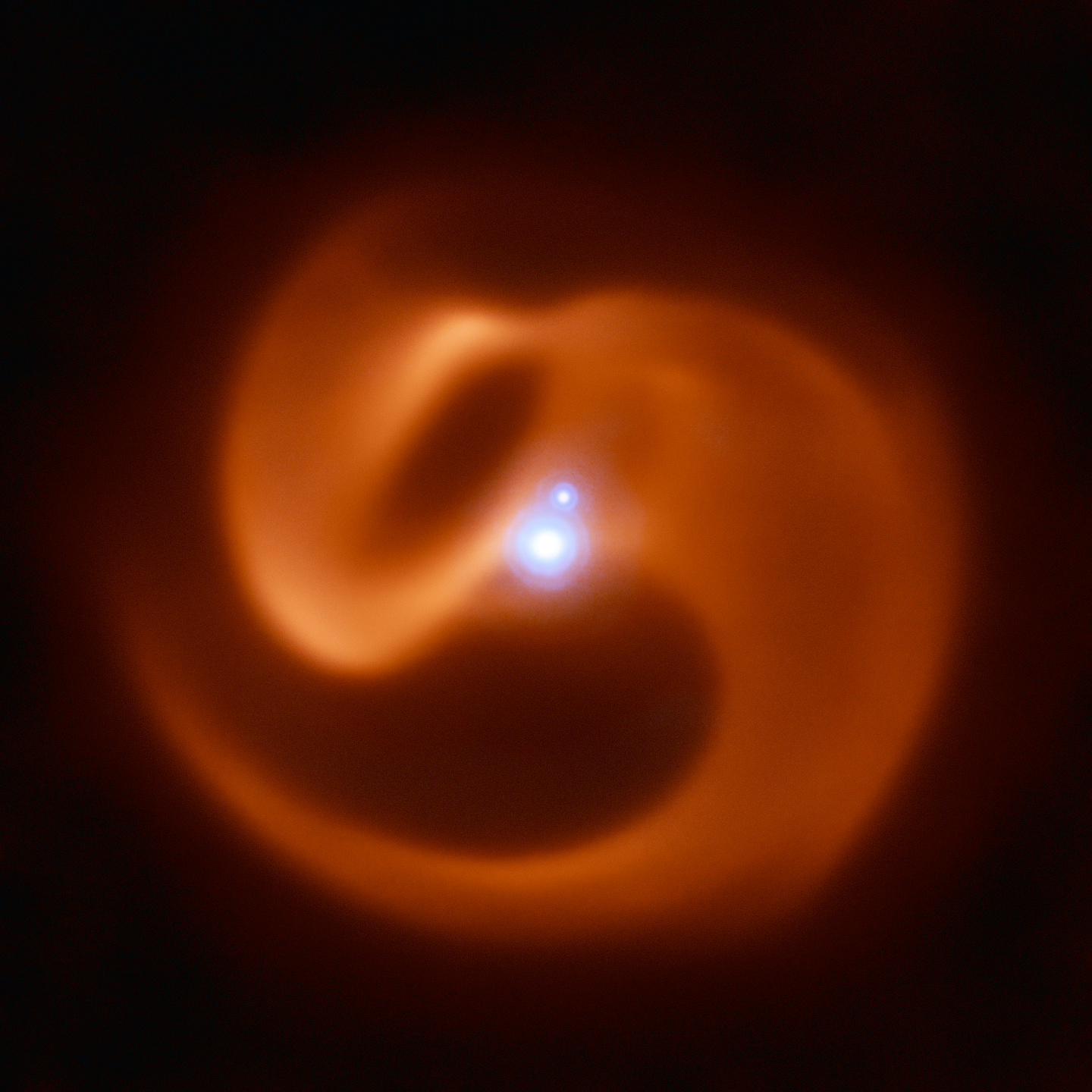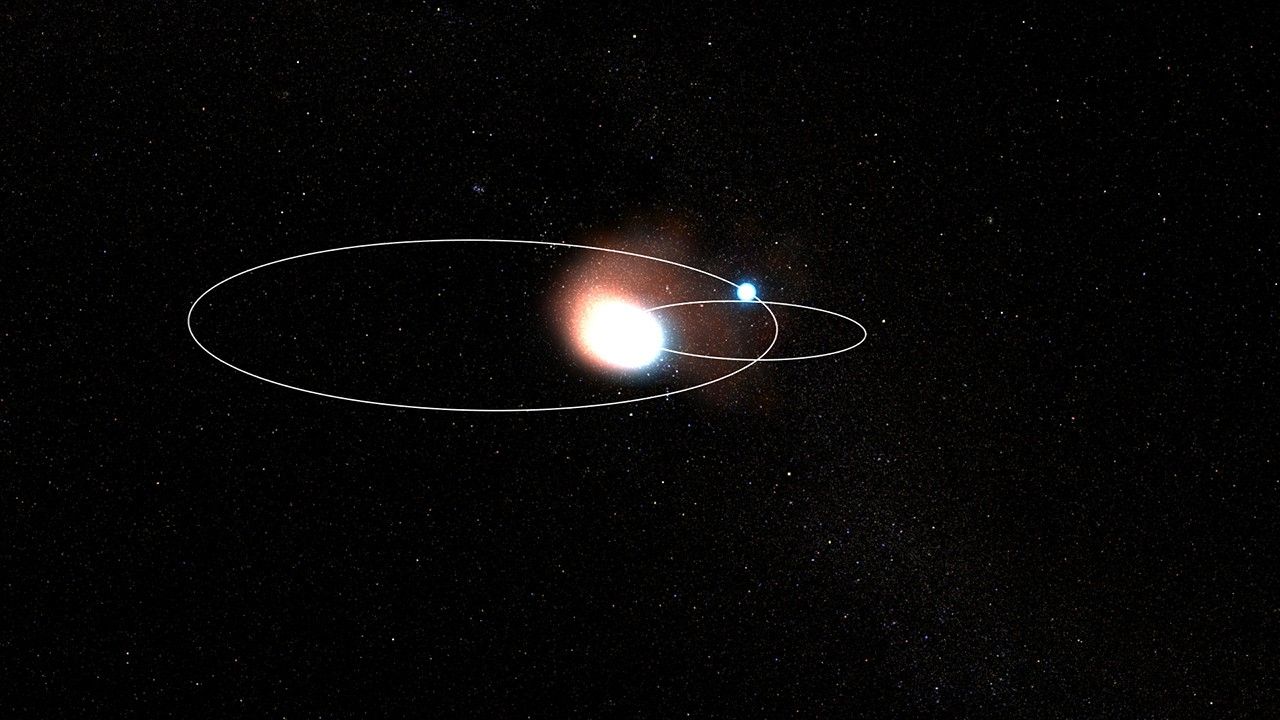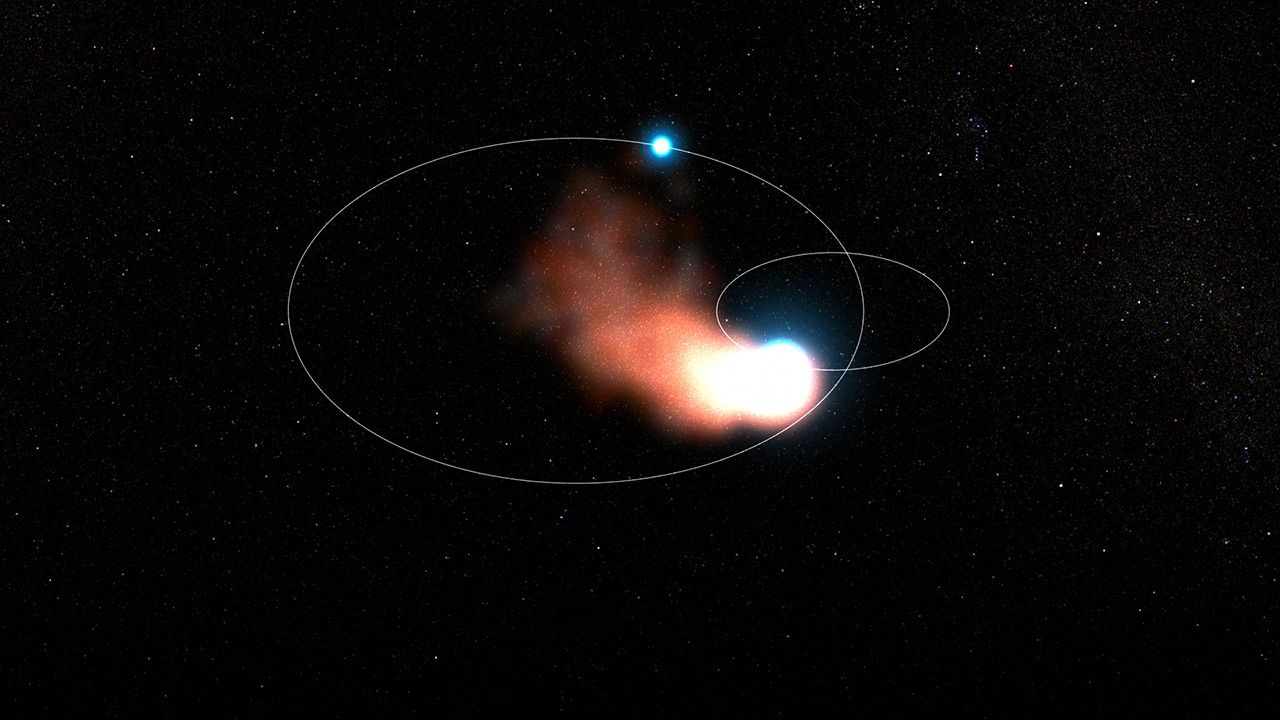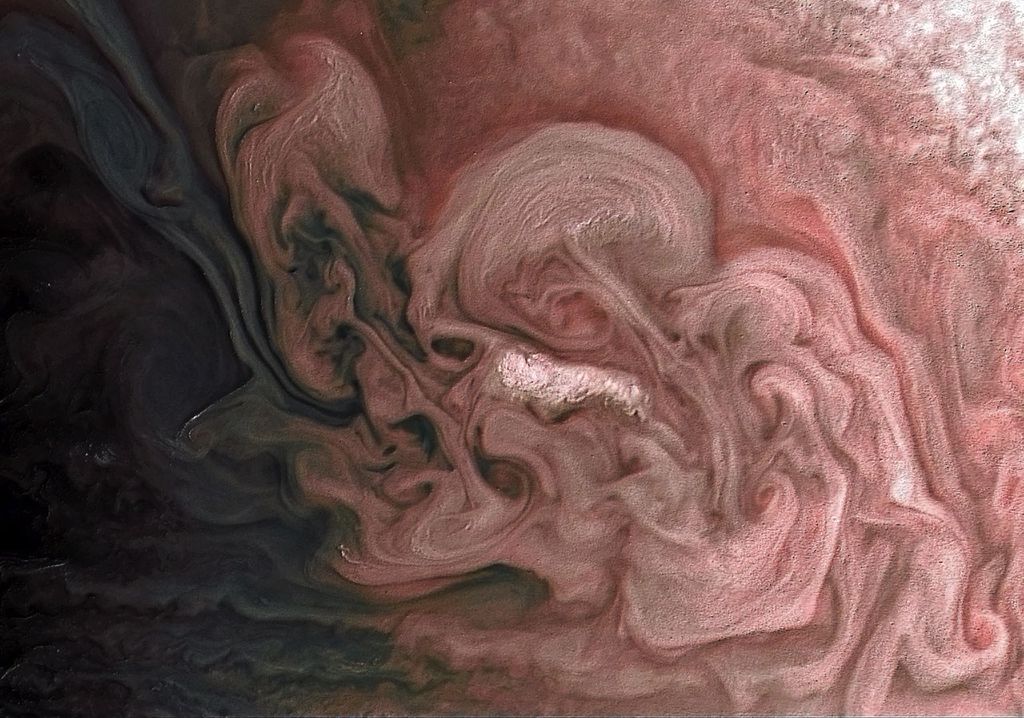1 min read
Apep Star System (VLT)

Evidence indicates that large amounts of cosmic dust are produced as the stellar winds of massive stars collide in Wolf-Rayet binary or multiple-star systems. As the stars orbit each other and dust is produced, a distinctive pinwheel pattern is formed, as shown in this image from the European Southern Observatory. Warm dust like this glows in the mid-infrared wavelengths of light detectable by NASA’s James Webb Space Telescope. Confirming the origin of dust will help account for the mysterious over-abundance of it found in galaxies, which is crucial to the later development of stars, planets, and life as we know it.
About the Object
- R.A. PositionR.A. PositionRight ascension – analogous to longitude – is one component of an object's position.16:00:50.48
- Dec. PositionDec. PositionDeclination – analogous to latitude – is one component of an object's position.-51:42:44.94
- ConstellationConstellationOne of 88 recognized regions of the celestial sphere in which the object appears.Norma
About the Data
- InstrumentInstrumentThe science instrument used to produce the data.NACO and VISIR
- Object NameObject NameA name or catalog number that astronomers use to identify an astronomical object.Apep
- Object DescriptionObject DescriptionThe type of astronomical object.Triple Star System
- Release DateNovember 18, 2020
- Science ReleaseThe Cosmic Dust in Your Bones—NASA’s Webb Telescope Will Investigate the Intertwined Origins of Dust and Life
- CreditImage: ESO, Joseph Callingham (ESO)

These images are a composite of separate exposures acquired by ESO's Very Large Telescope (VLT). Several filters were used to sample specific wavelength ranges. The color results from assigning different hues (colors) to each monochromatic (grayscale) image associated with an individual filter. In this case, the assigned colors are: Blue: 2240nm Orange: 8900nm
Related Images & Videos

WR 140 Binary System: Perspective View
This animation shows the production of dust in the binary star system WR 140 as the orbit of the Wolf-Rayet star approaches the O-type star and their stellar winds collide. The stronger winds of the Wolf-Rayet star blow back behind the O star, and dust is created in its wake as...

WR 140 Binary System: Top View
This animation looks down from above the orbital plane to depict the spiraling creation of dust in the binary star system WR 140. A Wolf-Rayet star — the dense core of an aging massive star — and an O-type star orbit one another, their stellar winds colliding as they get close....
Share
Details
Laura Betz
NASA’s Goddard Space Flight Center
Greenbelt, Maryland
laura.e.betz@nasa.gov
ESO, Joseph Callingham (ESO)






























